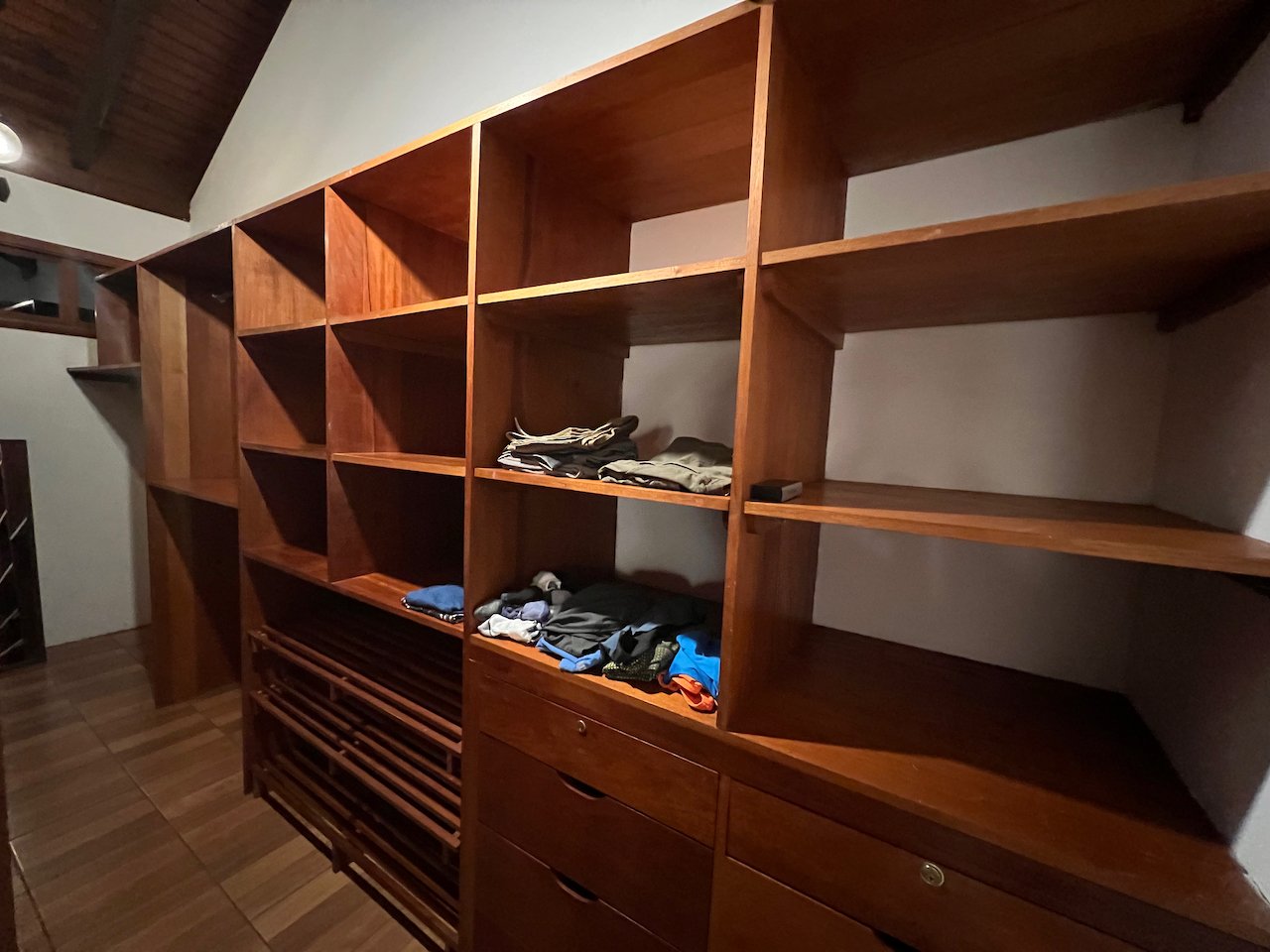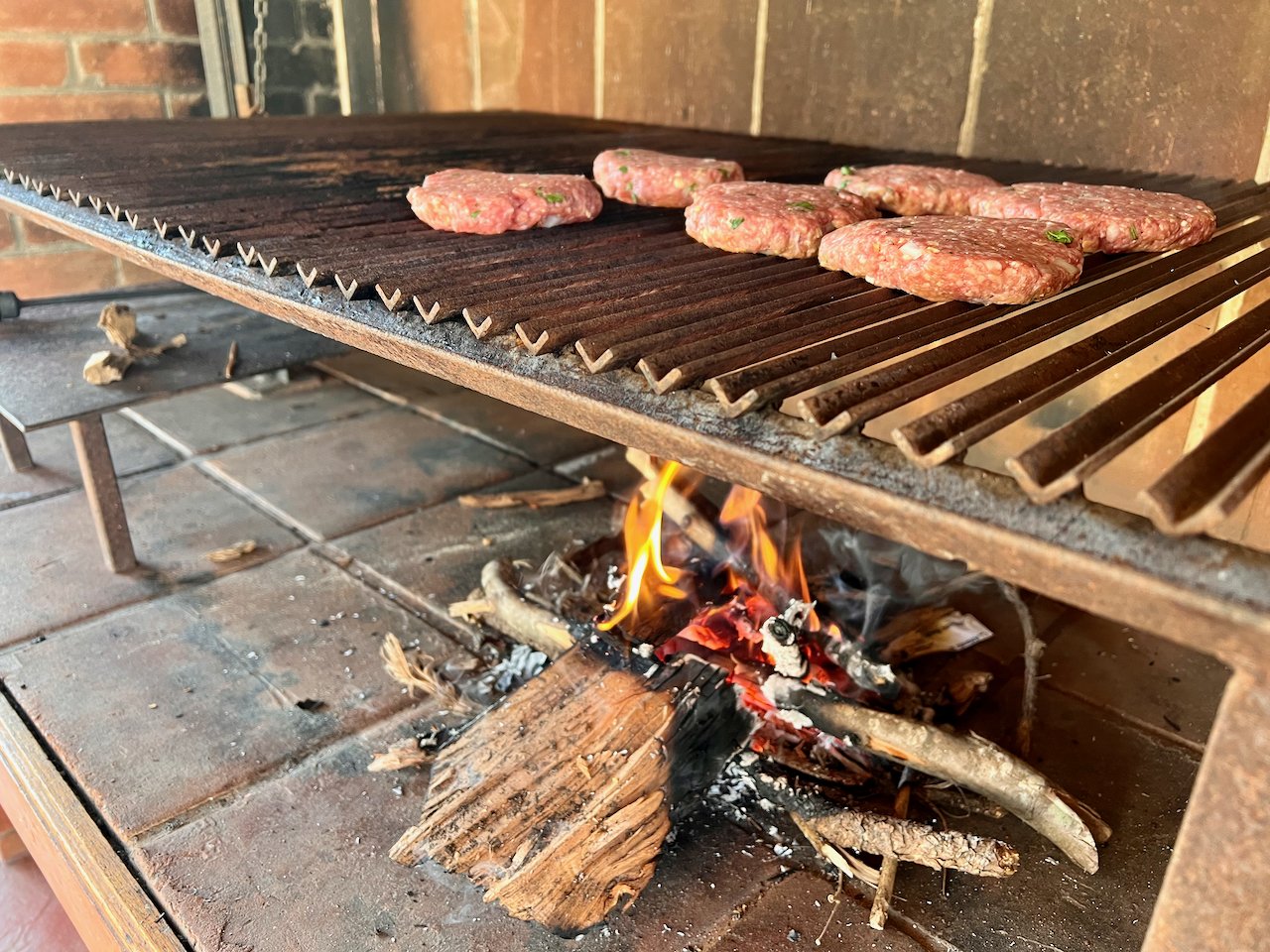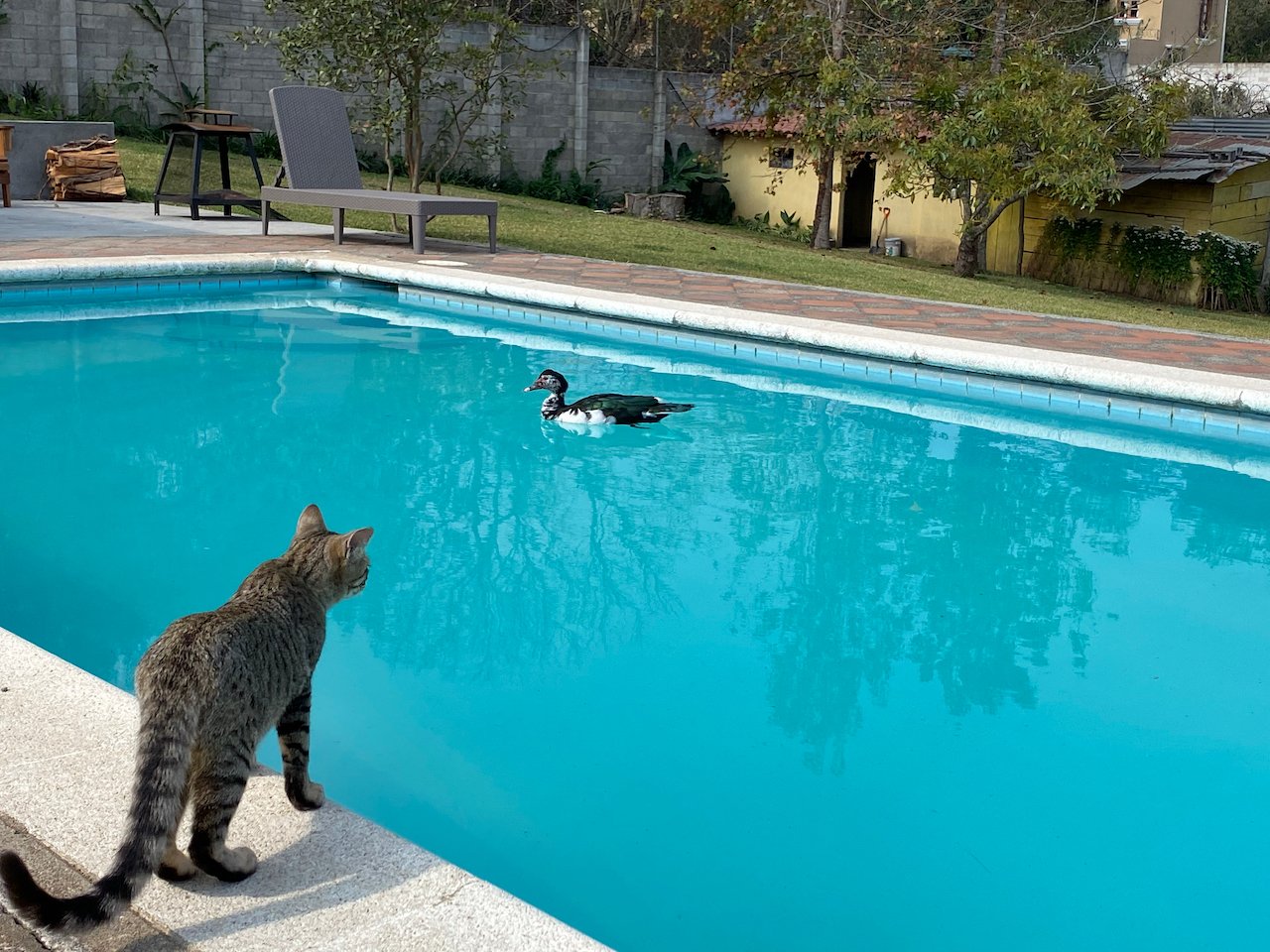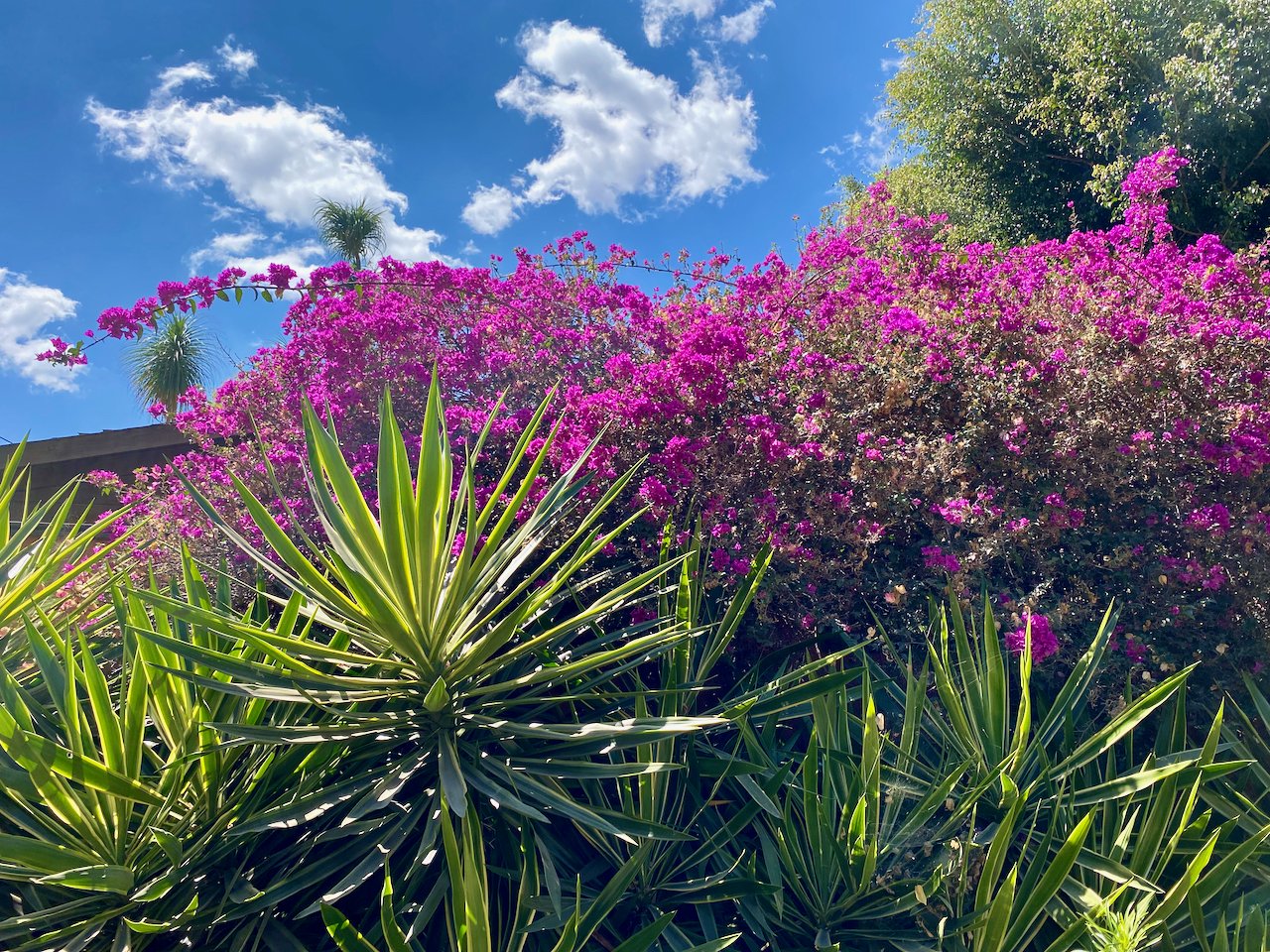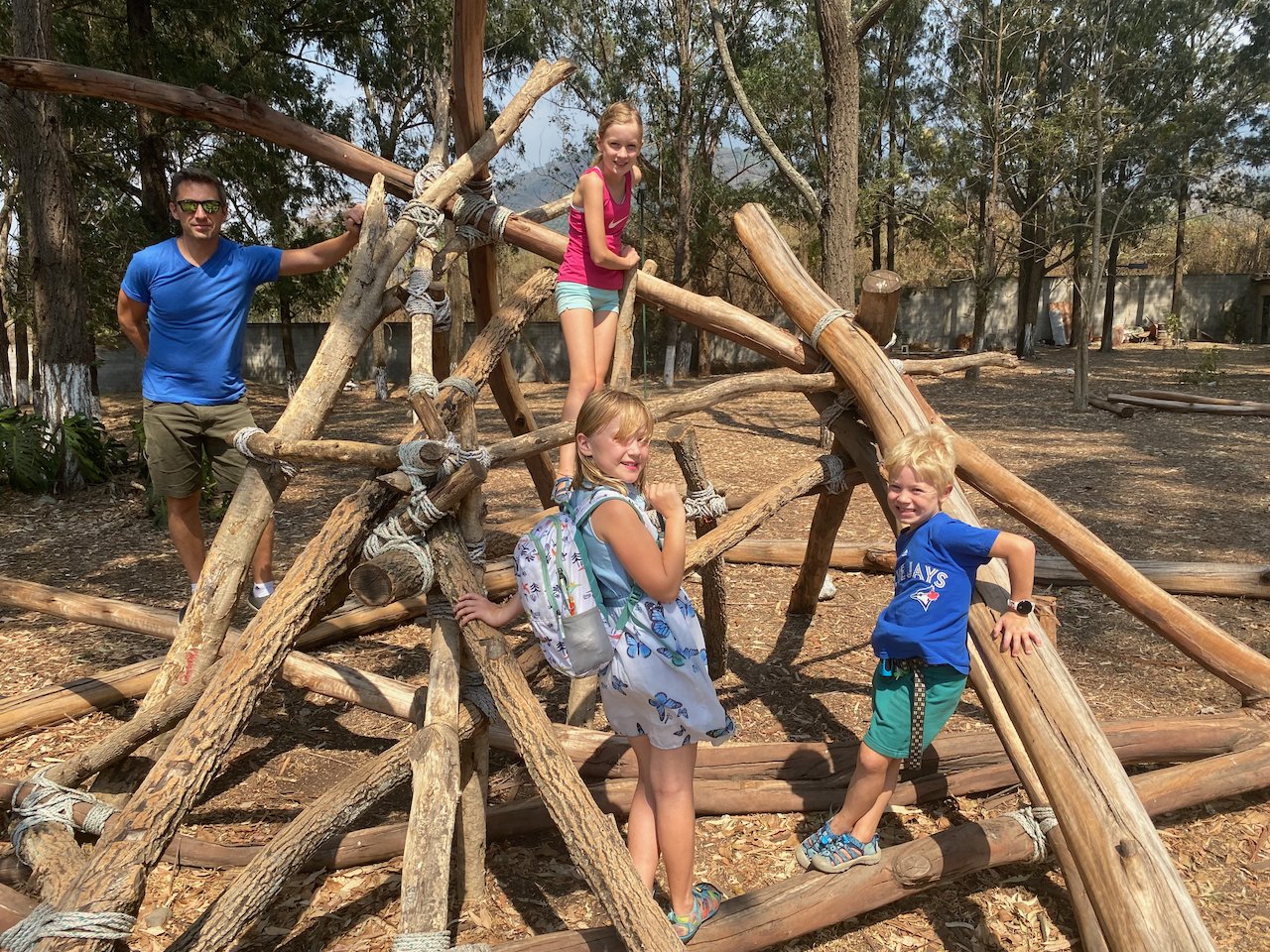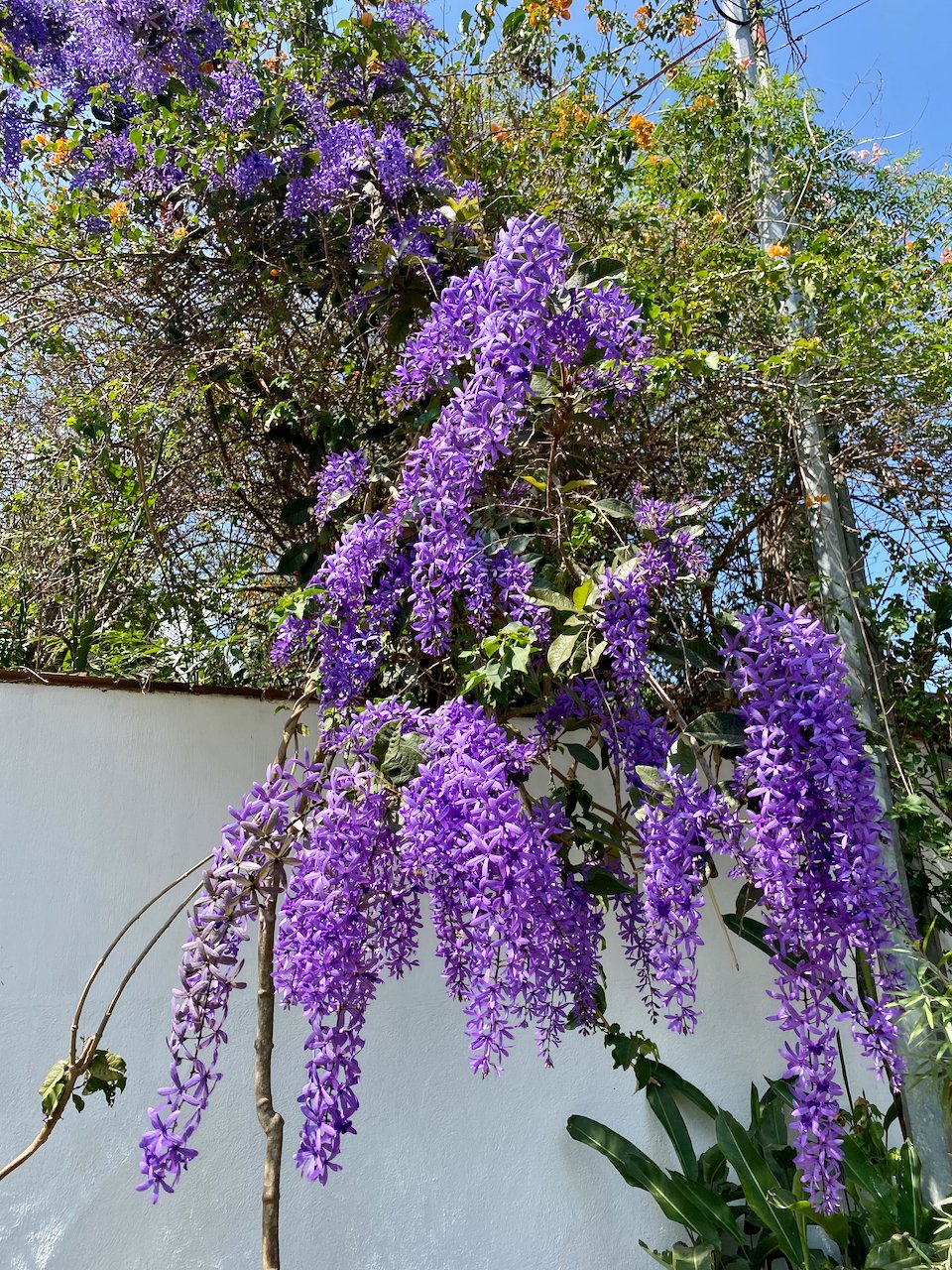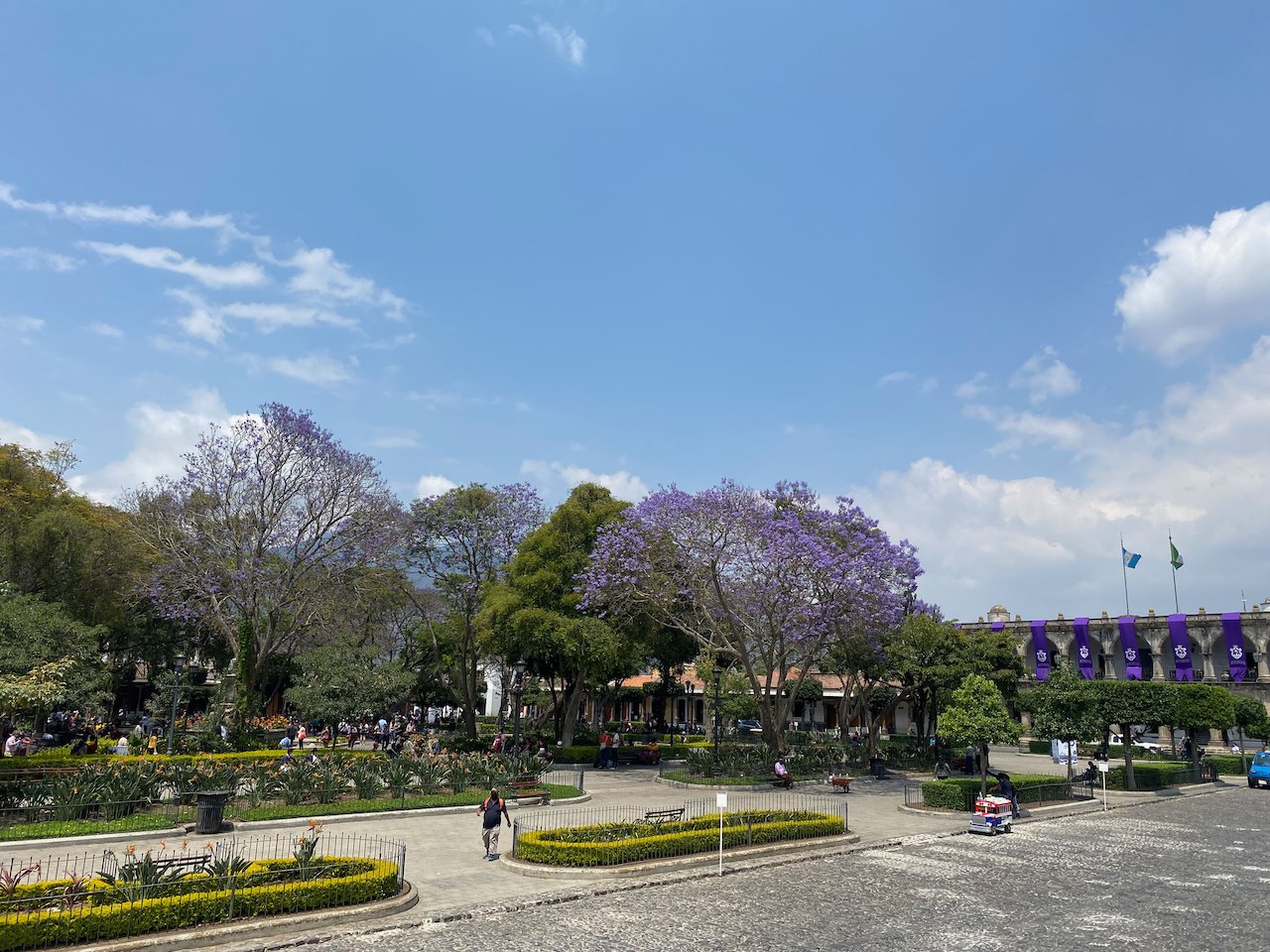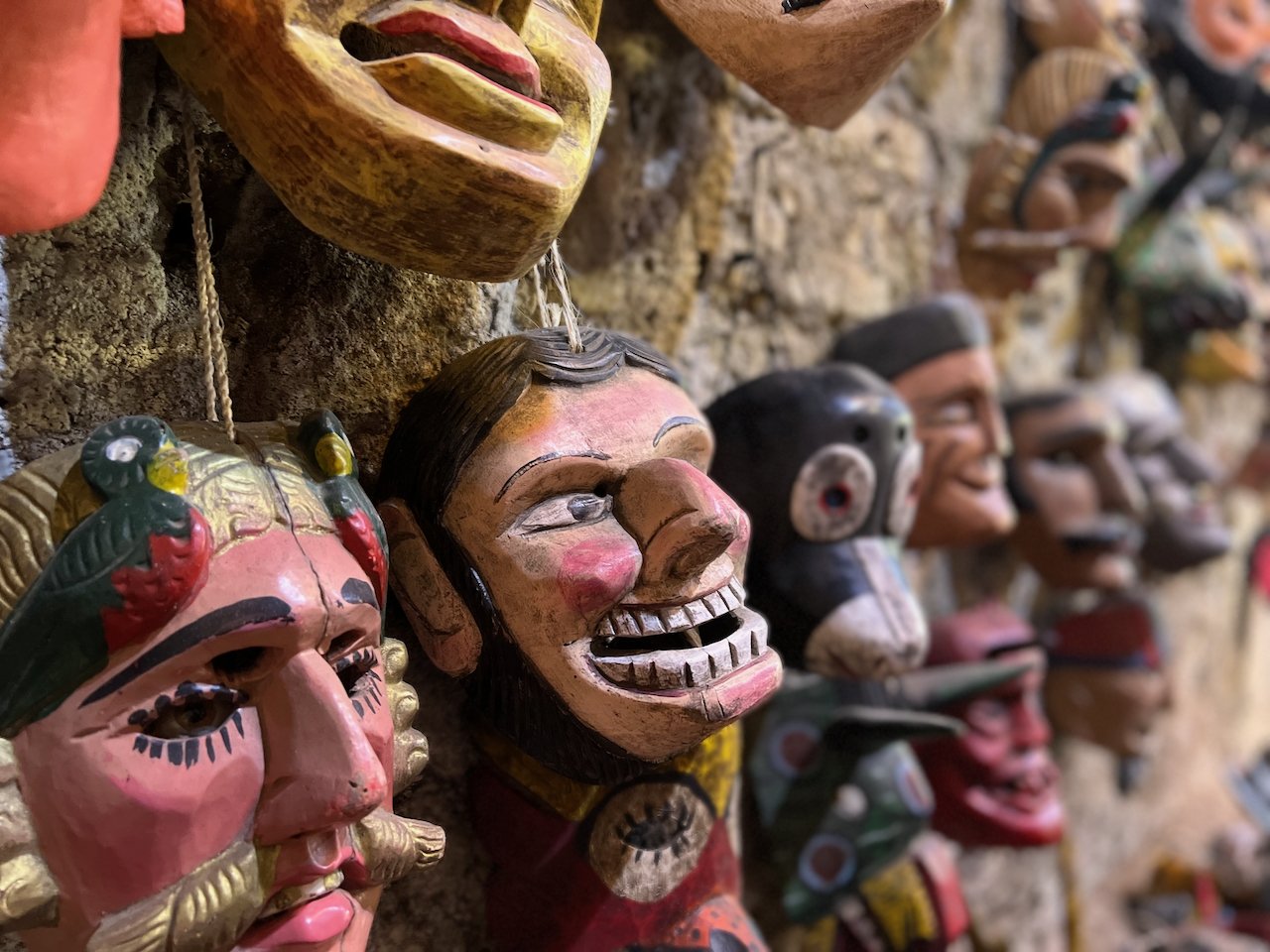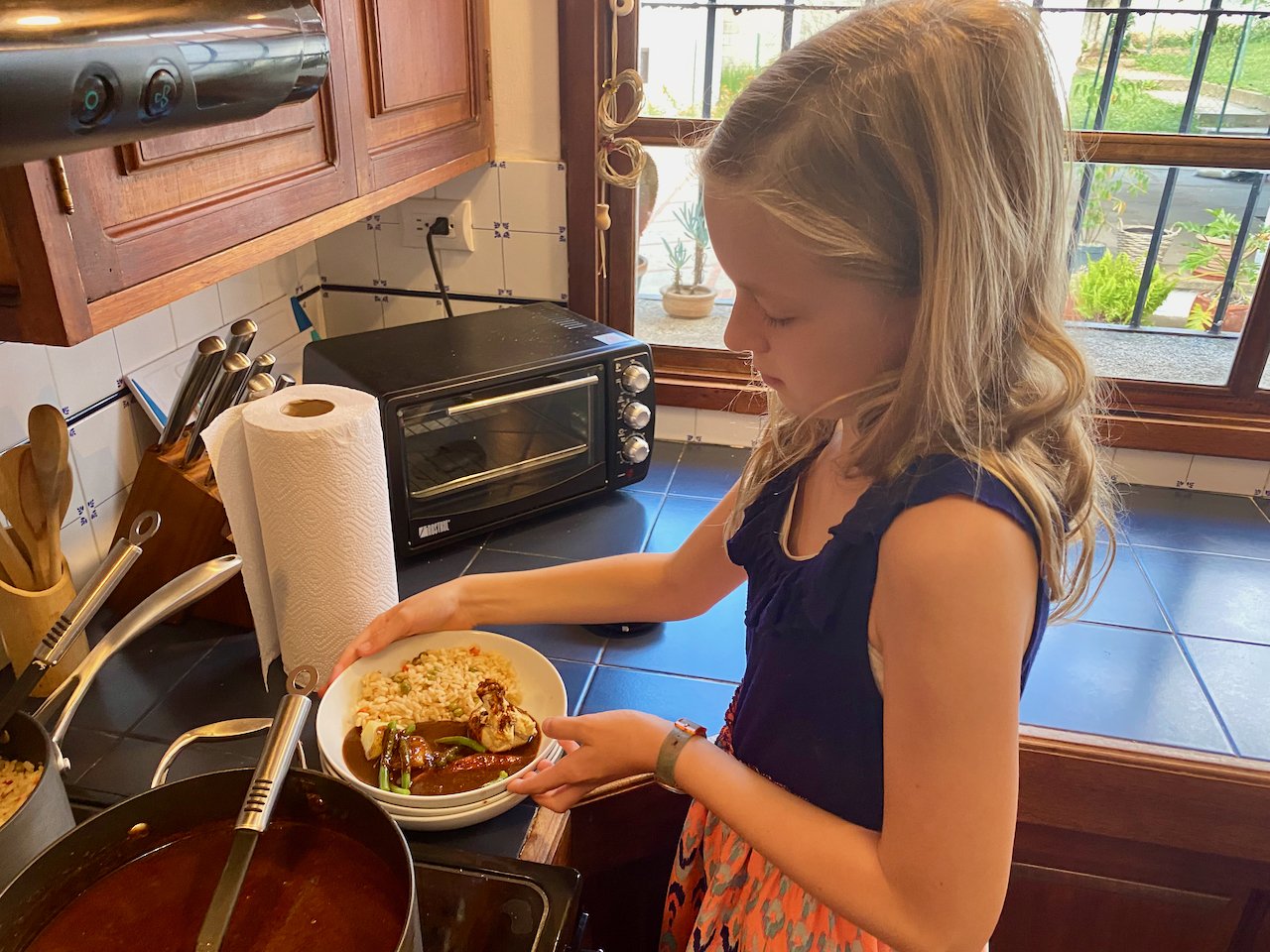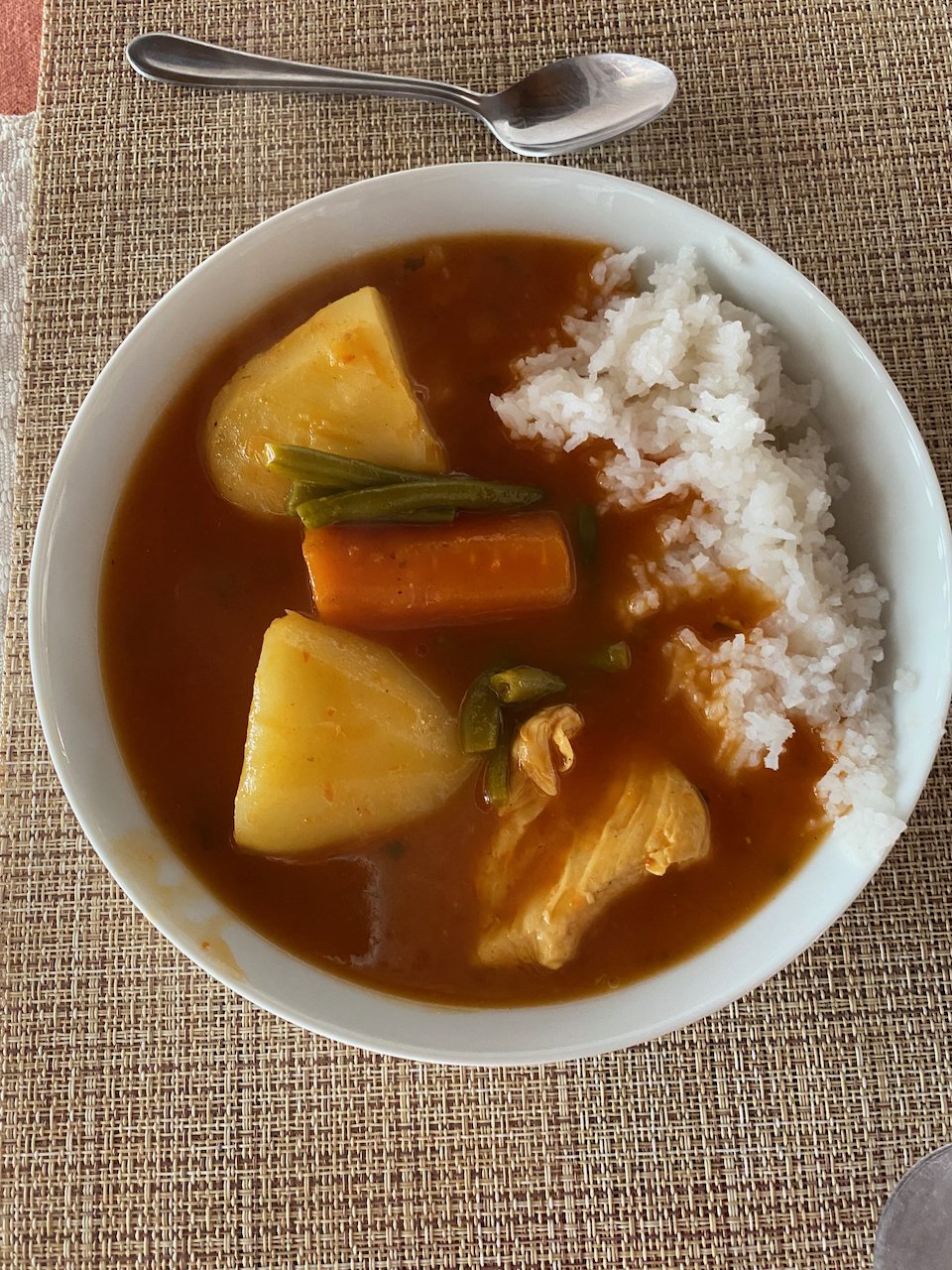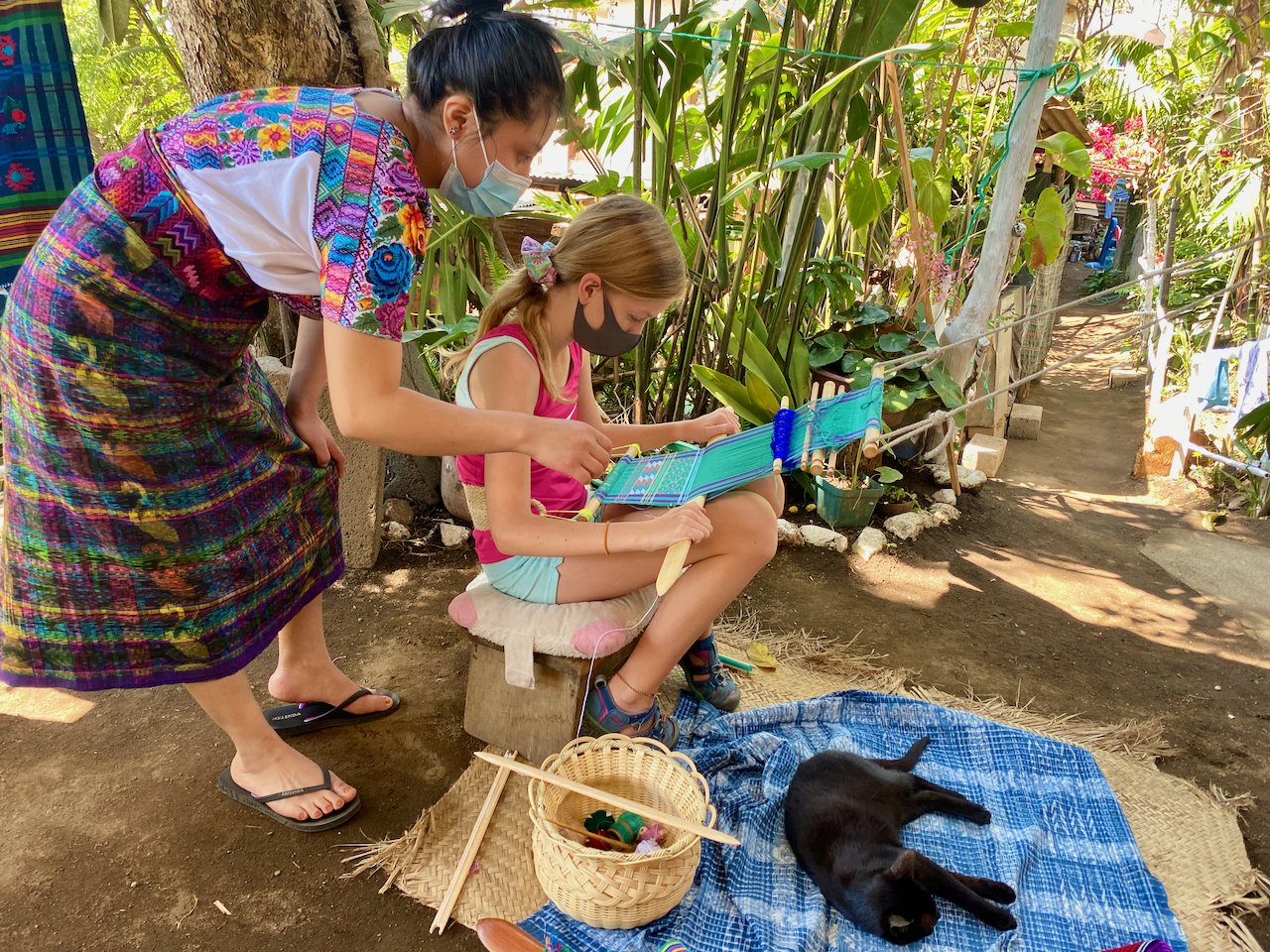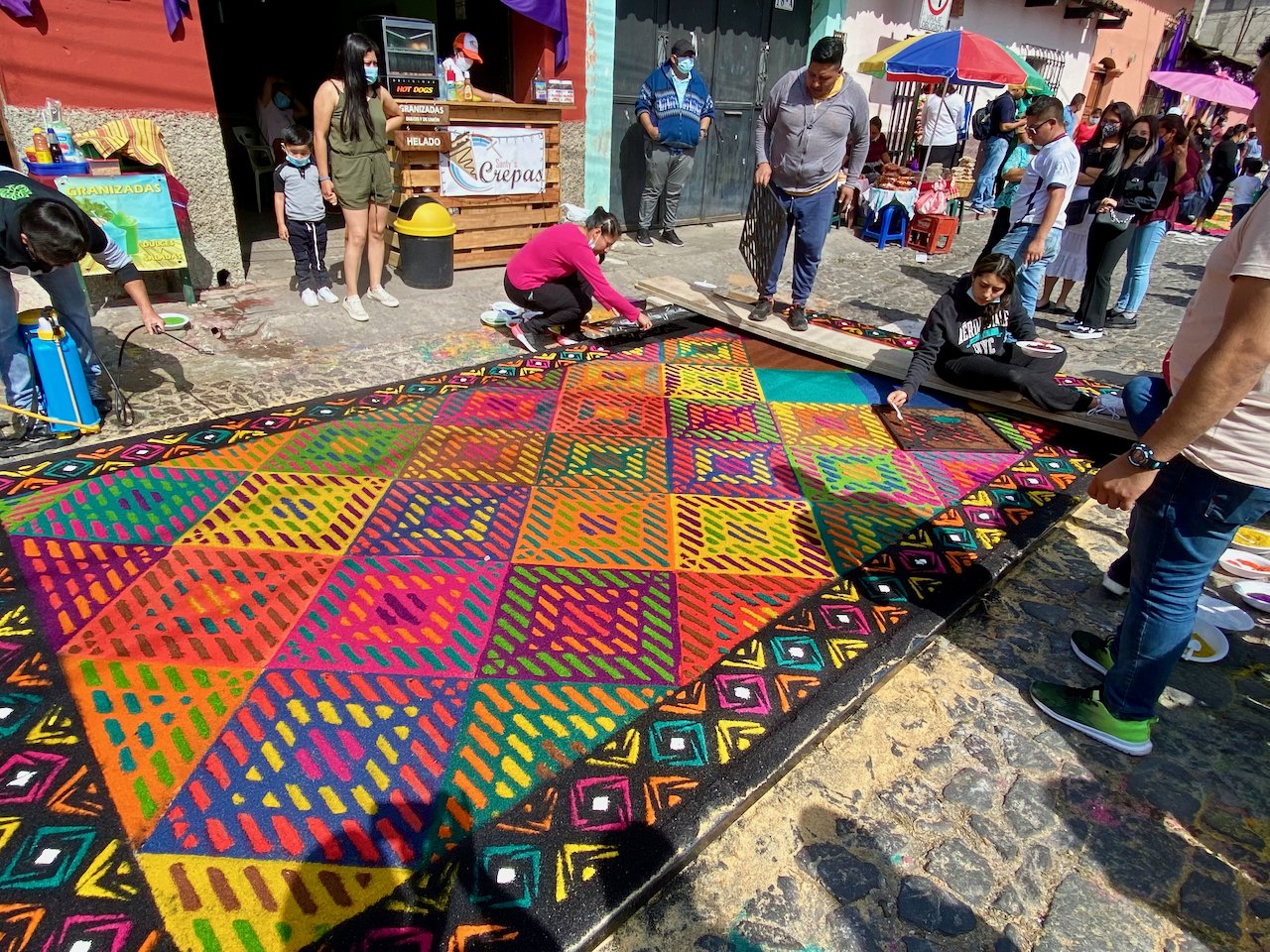As we sat in the common spaces of Los Amigos Hostel in Flores, merely days before planning to arrive in Antigua, we scoured the internet for a home to rent for a month. We’d left the decision to the last minute, something that is very uncommon for two ex-military planners to do, because we were not yet sure whether to break up the month by spending a few weeks in one spot and a few weeks in another. However, we have learned that our family does best when given time and space to slow down and spread out. After acknowledging this, we felt that one home base for a month was the right choice.
Enter Casa Relaxtenango, a large estate in a subdivision just outside the city of Antigua. The property had way more space than we needed and came with a trampoline, a pool, an outdoor, open-fire cooking area, a vegetable garden, and a view of a volcano. The property was managed by two full-time employees who took care of us along with the grounds. But the real selling features (because it was over budget) were the four-legged occupants living there: a husky named Osho and two cats named Tigre and Chica. It didn’t take us long to unpack and our stuff barely filled a room. We had to get used to communicating along the cinderblock hallways and through the solid wood doors.
The gated community was filled with compounds, or walled properties, decorated with colourful gates and beautiful garden walls. There was a large community park to play in and cobblestone streets throughout. From various locations, we could see three volcanos: Agua, Fuego, and Acatenango. We were living a luxurious life.
Antigua was once the capital city of Central America when under Spanish rule. The city was ruined a number of times by natural disasters, so, in the 1770’s, Guatemala City became the new capital’s location in hopes of avoiding further destruction. A number of original buildings remain as historical landmarks in Antigua. There are also a number of ruins that have been left in their crumbled form for all to see. The city is very lovely with its colourful walls, its modern shops, and its colonial landmarks. We took a walking tour to learn more about the architecture and history. One interesting fact that we learned was that there are a number of mermaid carvings throughout the city. It’s still debated as to why the carvings exist and what they may have symbolized, but we had fun trying to spot as many as we could.
One aspect of Antigua that we enjoyed were the markets. As Antigua attracts many visitors every year, there are plenty of markets and small shops in which you can find any number of souvenirs. The stalls are colourful, vibrant, and sadly quiet. We’ve seen many places on our travels where COVID has significantly impacted peoples’ livelihood and Antigua is no exception. During one visit to the tourist market, we were the only folks walking around an area with over 20 stalls selling similar products. Every vendor was looking longingly at us, hoping we’d choose their store. It was heartbreaking. Even the kids, without prompt, picked up on the vibe and mentioned wishing they had enough money to buy one thing from everyone.
The Antigua Central Market is massive. We only ventured deep into the heart of the market square with someone local who knew how to get in and out without getting lost. We found some fresh and flavourful vegetables and fruits as well as all of the special ingredients needed for Guatemalan cuisine. You see, we asked one of the support staff on the property, Vicky, if she would teach us to cook some local dishes. She was quite thrilled to share her family’s recipes with us. She would plan the meal, take us to the market for ingredients, and then get everyone involved in the production. When done, we all ate together. Many of the dishes consisted of boiled vegetables covered in a thick, richly flavoured sauce and accompanied by corn tortillas or rice. We made pepian, estofado, hilachas, plantains with chocolate mole, pulique, and papusas.
Another highlight of our month in Antigua was being able to meet and spend time with other travelling families. Through Instagram we met The Hart Family (@wehartstravel) and The Sullivans (@chasing_sun_adventures) who are doing a similar trip from the US down through Central America in their overlanding vehicles. As we were both in Antigua at the same time, we decided to hang out a few times, share travelling stories and tips, and let the kids be kids with other kids. We hadn’t realized just how much we were missing socializing until we got to do it. Also, spending time with families who are as nutty as we are made us feel a little less nutty.
The Sullivans joined us for some cooking one afternoon and also teamed up with us to hike our first volcano: Pacaya. This volcano is active and draws hikers to its hardened lava flows where one can feel hot rocks and steam vents. You must be accompanied by a guide for safety reasons (we heard about someone’s shoes melting while they stood, unknowingly, on a hot rock) but also so that they can take you to the neat spots such as old crater sites and current vents. The kids were able to heat up and eat marshmallows in these vents. There are also vendors who offer to make you a pizza for lunch using the rocks as the oven. There’s even a small, mobile store selling jewelry made with pieces of Pacaya lava rocks. The owner told us that he’s had to move the store 7 or 8 times as the volcano still sends lava pouring down on occasion. The hike itself was 5km round trip but was fairly steep. Since the kids had other kids to keep them motivated, they did exceptionally well getting up and then down. The temperature cooled as we reached some cloud levels and the misty fog helped to create an ambiance of hot steam making the atmosphere super creepy. It was awesome!
Agua is the largest volcano in the Antigua area and forms the iconic skyline of many city photos. There is a road that switch-backs its way up to the top where a large number of cell towers, repeaters, and other radio antenna are installed. Unfortunately, hiking this trail/road up the volcano has been labeled as dangerous due to a number of muggings and other violent crimes over the past number of years. As such, few folks choose to hike up the volcano. However, on one weekend of our visit, a new trail located on the other side of the volcano was created and opened for use. The town promoted this new trail as the “Extreme Route” and offered guided hikes for that weekend only. Erik signed up. It took him 12 hours to walk up and back. Extreme is perhaps an understatement. It was muddy and slippery, steep and narrow, practically vertical, and very challenging. He’s proud to have made it but happy to never do it again.
Probably the most famous volcano in the area is Fuego due to it being visibly active. Every day, many times over, the volcano sends up plumes of hot ash. It has been doing so for many years. Sadly, in 2018, it sent so much hot ash out at once that the flow of ash wiped out a number of villages, killing many. Beside Fuego is Acatenango, equally tall but dormant. There are a number of companies that will lead you up Acatenango and around to the side closest to Fuego. From there, you get a front-row seat to the eruptions including seeing the red-hot rocks and (sometimes) lava especially at night. Erik and I were able to find a babysitter for the night and join the Wicho and Charlie team for a hike and overnight on the volcano. Although Fuego was surrounded by cloud when we first arrived, it cleared for the evening and gave us a great show. An eruption around 2am was complete with lava, but we didn’t get a photo to share. The hike itself was fairly tough at times but was still doable, especially if you take your time and walk a pace that’s comfortable. Heading down the next day was more difficult than the hike up. It took me three days for my legs to recover, but the trip was totally worth the pain.
Seeing some of the gorgeous fabrics worn by Guatemalan women, we were inspired to learn more about their traditional clothing. Guatemala is home to many Mayan villages and families often use processes and practices passed down through generations. One such process is the art of backstrap weaving. The skirts and shirts and belts are all hand-woven and sewn. I was fortunate to find a lady named Liza who has set up a small business supporting artistic practices of Guatemalans. She was able to coordinate a two-day backstrap weaving lesson for Claire, Molly, and I. She introduced us to a family of women in a neighbouring town who are all avid weavers and who were happy to provide us with instruction (in Spanish, of course). We arrived at Lidia’s house and were greeted by Lidia, her two sisters, and her three daughters. They had already set the warp in the colours that we’d previously chosen (meaning that they had already spent a number of hours stringing the vertical threads between the upper and lower warp sticks (or loom bars) and setting the shed rods and heddle stick). After our introductions, we were shown how to sit with the backstrap on our backs and what to do first. It was hard. The ladies were there to point or demonstrate every step, but it was still hard to conceptualize. There is definitely a pattern to the movements but that pattern will change depending on the design you’re weaving. Just when I thought I was understanding the pattern, it would change again.
We worked for 4 hours, completing about 2.5 inches of weave. Claire was the quickest and had finished about 3.5 inches. We took a bus and tuk-tuk back to our house and had to stretch out flat for the afternoon to recover our back and neck muscles. The next day, we worked diligently in an attempt to complete another 3 inches. Erik and Simon joined us for the final hour and Simon took a turn at trying some of the steps. Lidia helped me finish off a pattern so that I’d have a more complete looking weave. I couldn’t believe just how quickly she moved! With hugs goodbye, we left with our work, some great memories, and a huge appreciation for their craft.
Our time in Antigua flew by quickly. We found ourselves packing for the road yet again. But before going, we were given a tip from a local to check out the Easter procession taking place that weekend in a small town close by. This was going to be the first public gathering in two years and everyone was excited. We had heard that Antigua is one of the best places to visit of Semana Santa (Easter week) in Central America. However, we were going to have already left by actual Easter so we were particularly glad to hear that this small town, Santa Ana, would be holding their celebrations early. We arrived 30 min before the planned departure of the procession to find a number of carpets (or alfombras) in the final stages of being completed. These carpets are built along the path of the procession and are made out of coloured sawdust, flower petals, other plant pieces, and rice. There were beautiful patterns, symbols, and even names of families or businesses. The town square was full of people, vendors, and news crews. As the procession left the church, everyone was fixated on the statues. Men in purple robes carried a float of Jesus carrying his cross. Ladies with black lace veils carried the float of Mary. Each float was accompanied by a marching band. We watched them head out with Fuego smoking in the far distance. They paraded through the town roads with many faithful followers in tow. It felt like we were witnessing something special in such a unique part of the world. We stuck around in the square and tried some street food. The whole town had the air of celebration and we felt privileged to be present.
We packed up once again, gave lots of hugs and pets goodbye to those we’d come to know and headed towards our 6th county, El Salvador.




